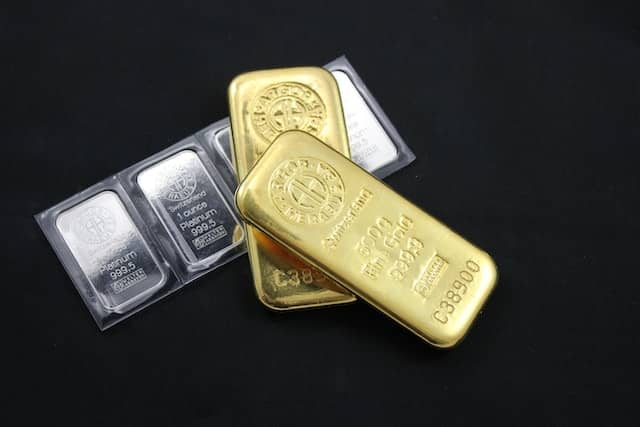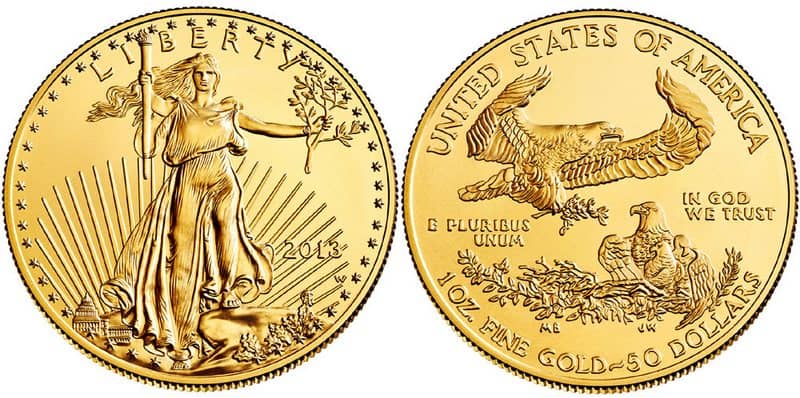Disclaimer
This article is for informational and educational purposes only and does not constitute financial advice. The author may hold positions in the assets discussed. Any discussion on jurisdiction, exchanges or custody providers reflect the author's personal views and experiences and is not a personal recommendation. Always do your own research and seek professional guidance before making investment or custody decisions.
Last Updated on January 23, 2025
The best investments during inflation are assets that preserve or even grow your purchasing power.
The best way to look at inflation is not as rising prices, but as the value of your fiat currency falling. In other words, it takes more currency to buy the same amount of goods and services as before.
This occurs as additional units of currency are created, because you have more money chasing fewer amounts of goods and services. Hence prices rise.
The dollar value of an asset is not the most important metric, especially when the value of dollars is declining over time.
What is important is the relative value of an asset compared to other assets and the value of an asset relative to the goods and services it can buy.
As asset price might nominally appreciate, but if it goes up slower than the rate of inflation then your real return is negative.
So to beat inflation, you need a nominal return that exceeds the rate of inflation. This gives you a positive real return.
If an asset has a positive real return, then it can preserve its purchasing power and helped you withstand inflation.
Bear in mind that good assets to own during inflation won’t necessarily go straight up in line with the CPI. They will chop around with some volatility in the short term as the short term price action is driven by a range of factors.
These are the 10 best investments during inflation.
1. Precious Metals

Precious metals are one of the first things that people turn to in periods of high inflation.
Gold in particular is the world’s longest serving and most stable form of money, preserving purchasing power from the ancient world to modern times.
However, gold is not a perfect inflation hedge, as there are other factors that drive the gold price, such as real interest rates. In the short term, it does not necessarily correlate strongly with inflation and there are periods in recent history where inflation has been high but gold has not.
But every fiat currency eventually dies, yet gold remains. In periods of uncertainty, gold is one of the best assets to hold if you have a long term view.
In the inflationary 1970s gold was up 2300%.
Silver has long been officially demonetised but it is still considered a monetary metal and a good asset to own in times of inflation.
It is much more abundant than gold, much more volatile than gold and in its price action it often behaves more like an industrial metal than a monetary metal.
Yet in times of financial distress silver tends to follow gold with much more explosive moves. Silver famously exploded to the upside during the inflationary 1970s peaking at $50.35/oz in 1980.
If you are looking for big upside and are happy with higher risk then silver can perform well.
Platinum is another precious metal that can be regarded as a good investment in times of inflation.
It followed gold and silver on a massive bull run in the inflationary 1970s and again in the early 2000s.
Its performance has been lacklustre of late, but if history repeats then it will follow gold and silver up in the next cycle in an explosive move.
2. Commodities
Commodities are one of the best investments during inflation because they are scarce and tangible goods.
A 2021 research paper published by investment firm Man Group, found that commodities are the best performer in inflationary times.
Looking back over eight inflationary periods in US history, they found that commodities produce a 14% real annual return, with energy the standout performer with a 41% real annual return.
Commodities can be incredibly volatile and the short term price direction is not correlated with inflation as it will be driven by numerous other factors.
But in the long run, as commentators have been saying lately, the Fed can print more dollars but they can’t print more oil.
Commodities have lagged the S&P500 since 2008 by a massive margin in a period of low inflation.
But now we are in a period of high inflation, commodities are expected to outperform.
Even the Bank of International Settlements, of all people, recommend commodities as the best way to beat inflation over the long term.
They recommend a portfolio contains 68% weighting to commodities in order to achieve a 4% real return.
3. Stocks
Stocks have a mixed performance in times of inflation, depending on the other macro factors at play.
On one hand, inflation is generally bad for stocks. Consumers often cut spending. Central banks raise rates, strengthening the dollar and therefore hurting exporters. Costs rise as companies have to pay more for raw materials and labour. All these things hit profit margins, which often leads to a sell off in stocks.
But the right stocks are an excellent protection against inflation and monetary debasement.
Think of it this way. Owning stocks is being a partial owner of a business. As prices rise, costs go up for business. But they also have the ability to put prices up to try to maintain their profit margins.
You just have to be judicious about which type of stocks you choose and be mindful of rising costs and falling demand.
For example, many people immediately think of mining stocks as a good performer in times of inflation. They definitely can be, if the price of the underlying commodity goes up.
But they are also vulnerable to increasing costs as well, particularly if the price of oil is on the rise.
Commodity stocks and hard asset stocks can perform very well during inflation, but only if the price of the underlying commodity increases faster than their costs.
According to Warren Buffett, stocks that are typically the best investments during inflation are capital light.
In his 1981 letter Buffett explained:
“Businesses that are particularly well adapted to an inflationary environment… must have two characteristics:
(1) an ability to increase prices rather easily (even when product demand is flat and capacity is not fully utilized) without fear of significant loss of either market share or unit volume, and
(2) an ability to accommodate large dollar volume increases in business (often produced more by inflation than by real growth) with only minor additional investment of capital.”
In 1983 he added this:
” For years the traditional wisdom – long on tradition, short on wisdom – held that inflation protection was best provided by businesses laden with natural resources, plants and machinery, or other tangible assets (“In Goods We Trust”). It doesn’t work that way. Asset-heavy businesses generally earn low rates of return – rates that often barely provide enough capital to fund the inflationary needs of the existing business, with nothing left over for real growth, for distribution to owners, or for acquisition of new businesses.”
Energy stocks, consumer staples and high quality capital light tech companies are good sectors to look at.
4. Real Estate
Real estate is an excellent asset to own during times of inflation.
Land is scarce and more dollars chasing the same amount of land in theory pushes the price up.
However, the main reason real estate does so well is that most people buy investment properties with debt and rent them out for income.
The debt is a nominal figure at the time you acquire the loan. That means you don’t have to pay back more money because of inflation. As long as you can service the repayments at the start, it gets easier and easier to pay the debt back over time as dollars get more plentiful yet the debt burden remains the same.
Additionally, inflation pushes up rents, meaning you earn a higher rate of return over time on the nominal unchanging debt.
5. Farmland

Farmland is a particular type of real estate that performs especially well during times of high inflation.
It is a low volatility high growth asset class that is underappreciated.
Farmland is scarce and as the world’s population grows and food demand increases, each acre of farmland grows more and more valuable.
Owning arable land is one of mankind’s oldest investments and it allows for capital preservation, capital growth and income.
Farmland is not a financial asset and it doesn’t matter what currency it is denominated in. Even if the value in fiat dollars continues to fall, farmland will at least retain its real value and it could very easily grow in real value.
During the Weimar hyperinflation, farmers famously did very well. They could refuse to sell their agricultural goods for paper if they chose and maintain a temporary self-sufficient lifestyle.
Often farmers did sell their goods for paper and then immediately went and spent the paper on a hard asset that urban folk were liquidating to try and stay afloat.
You don’t have to become a farmer to benefit from the agricultural sector. You just have to be prepared to invest there.
6. Art
Art has long been one of the favourite methods of the ultra wealthy to provide long term protection against inflation and currency debasement, the other two being gold and land.
Like gold and land, art has no counterparty risk. If you own it, you own it. There is no risk of the company failing as there is with stocks, default as there is with bonds, or hyperinflation as there is with cash.
Art is a tangible asset that holds its value in the long run regardless of what is happening in the currency that it is denominated in.
CitiBank notes that “since 1962, the Masterworks.io All Art Index has delivered annualized appreciation of 9%.”
It also notes that it is a risk asset that can have steep sell offs during times of crisis but that it had a positive rate of return during the worst inflation of the 1970s and has had comparable returns to other risk asset classes in the period 2019-2021.
7. Fine Wine

Fine wine is a tangible and scare asset.
It has consistently outperformed inflation but with much less volatility than something like gold.
The reason for this is because fine wine’s price is driven purely through supply and demand, whereas gold is affected by all manner of things like interest rates, dollar strength and geopolitics.
Only a very small amount of wine produced in the world is investment worthy.
There are just a few regions in the world that have the characteristics to produce investment grade fine wine. Therefore the supply is very limited.
As demand grows, and more inflated dollars chase a scarce amount of wine, prices will rise.
The Liv-Ex 1000, the broadest market index returned 50.3% in the five years from July 2017 to July 2022.
8. Collectibles
Collectibles can be good protection against inflation but be aware that demand can be very fickle.
Assuming demand for a particular category of collectibles stays strong, their scarcity means, all things being equal, that you should expect them to appreciate in an inflationary period.
The key is to select a category of collectible that has a long history and proven demand, like rare numismatic coins.
Something newer may lose the interest of collectors and investors and thus its scarcity can’t protect you from inflation if there is no demand.
9. Bitcoin
Understandably, Bitcoin’s reputation as an inflation hedge takes a beating in a bear market. In 2022, as inflation reared its ugly head, Bitcoin dropped like a stone along with other risk assets as there was a broad sell off across financial markets.
But Bitcoin is an excellent inflation hedge if you zoom out to the four year cycle. Bitcoin averages 200% gains per annum since inception with only three years in its history being down years.
Bitcoin operates on a fairly predictable four year cycle due to the halvings.
Every four years the block reward for Bitcoin is cut in half, this is known as a halving. The block reward is what a miner receives for validating Bitcoin transactions and adding the next block in the blockchain.
With a fixed supply of 21 million coins, the halvings are significant events because less and less supply is released to the market every time we go through a new halving event.
Bitcoin can be wildly volatile with massive price appreciation in bull markets and deep crashes in bear markets. But if you look at the logarithmic chart, which shows percentage change, Bitcoin’s price actions is getting smoother and smoother over time.
In between the booms and busts is slow and steady adoption, growth in the network and an appreciating price.
As a financial asset, like gold, Bitcoin’s short term price is driven by a number of factors and it does not directly correlate with inflation in the short term.
But over the long term, Bitcoin’s price trajectory is clearly up, while the value of fiat dollars is clearly down. Thus, Bitcoin will preserve purchasing power and protect you during inflation if you hold on long enough.
10. Treasury Inflation Protected Securities (TIPs)
TIPs are bonds that are indexed to inflation.
They are fixed income securities that work in a similar way to other bonds, except that the interest payment varies according to whether there is inflation or deflation.
The interest rate will stay the same over the lifetime of the security, but the par value is adjusted up for inflation and down for deflation. So in an inflationary environment your income will increase, rather than be eroded as it might be with other bonds.
While this may seem like a great deal there are several caveats.
Firstly, TIPs tend to underperform other fixed income securities over the long haul because inflation expectations are already priced into the bond market, thus TIPs normally only come out on top if inflation is higher than expected.
Secondly, since TIPs can lose value during periods of CPI deflation e.g. the 2008 crash, they will perform worse than cash in such a scenario.
Thirdly, and most importantly, TIPs are indexed to the CPI, not the true inflation rate which is much much higher.
TIPs are best used as a short term inflation hedge, when you expect the CPI to surprise the market to the upside. They are not that useful as a long term inflation hedge.
Conclusion
As more and more currency units are injected into the economy each year, inflation will continue and the purchasing power of dollars will continue to be eroded.
Short term inflation rates will vary but over the long term the downward trajectory of unbacked government currencies against hard assets will continue.
There are a variety of options available to you as an investor to protect yourself against inflation.
What you choose depends on your timeframe, your risk tolerance, your knowledge and your goals.
But you aren’t limited to just one inflation hedge. You could diversify and choose a range of them.
For me, I’m using physical precious metals, gold and silver miners, Bitcoin and commodity stocks, specifically in energy.
Hopefully this sees me through this period of high inflation.
Sources
Neville, Henry, Teun Draaisma, Ben Funnell, Campbell R. Harvey, and Otto van Hemert. 2021. “The Best Strategies for Inflationary Times.” SSRN Electronic Journal.
Image Credits
Oil Rig by Arvind Vallabh on Unsplash
Gold and Platinum by Zlataky on Unsplash
Farmland by Markus Spiske on Unsplash
Fine Wine by Hermes Rivera on Unsplash



